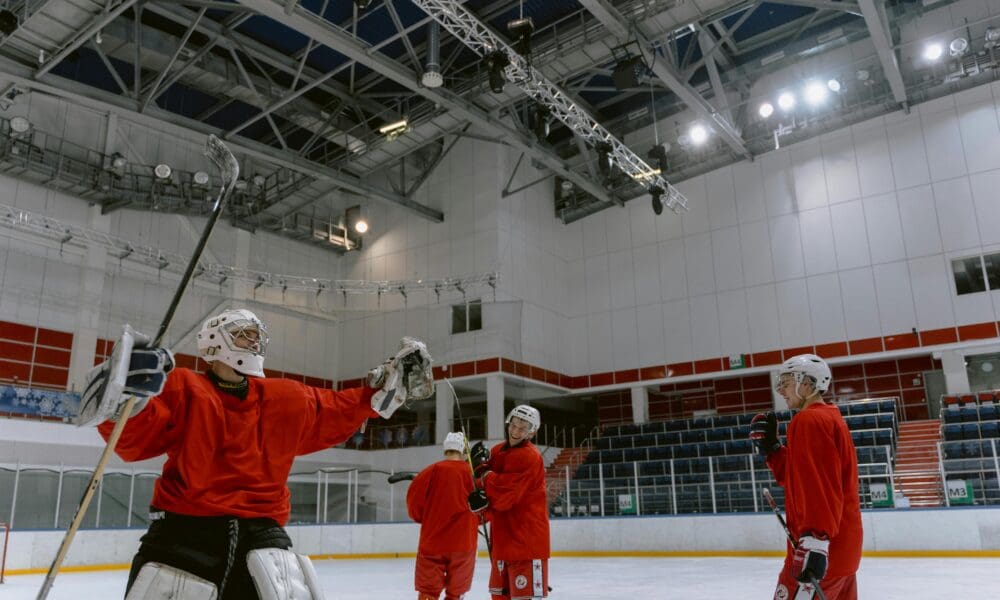Ice hockey, a sport renowned for its intensity and speed, is continuously evolving in the modern sports world. From its inception in Canada to its present global appeal, the game has undergone numerous transformations. Let’s explore how ice hockey is adapting and flourishing in today’s dynamic sports landscape.
Technological Advancements
Technological innovations have had a significant impact on ice hockey, changing how the game is played, viewed, and analyzed.
● Synthetic Ice Rinks: The introduction of synthetic ice rinks has revolutionized playing conditions, making the sport accessible year-round, irrespective of the climate.
● Equipment Enhancements: Advances in skates, sticks, and protective gear have improved player performance and safety. The most notable innovation was the goalie mask introduced in the 1950s, which has now become essential for player protection.
● Video Technology and Instant Replay: These tools have brought about more accurate officiating and enhance the viewing experience. Video analysis has become a critical part of coaching, aiding in strategy development and performance evaluation.
Example: The NHL’s use of video review helps ensure fair play and has significantly reduced controversies surrounding questionable goals.
The Globalization of Hockey
Originally a Canadian pastime, ice hockey has spread across the globe, with several countries emerging as hockey powerhouses.
● Expansion in Europe: The 1980s and 1990s saw increased competition from countries like Sweden, Finland, and Russia, contributing to a more diverse and competitive international scene.
● International Competitions: Events like the World Championships and the inclusion of hockey in the Winter Olympics have enhanced the sport’s global reach.
● NHL Expansion: The National Hockey League (NHL) has expanded into the United States and now includes players from various countries, increasing the sport’s international appeal.
Example: The International Ice Hockey Federation (IIHF), founded in 1908, plays a pivotal role in promoting hockey globally, organizing tournaments and establishing rules that govern international play.
Player Safety and Health
The evolution of ice hockey isn’t complete without addressing player safety and health, a significant focus in the modern game.
● Concussion Protocols: With growing awareness of sports-related concussions, the NHL and other leagues have implemented strict protocols to protect players.
● Protective Gear Improvements: Modern protective equipment is engineered to minimize injuries, combining advanced materials with ergonomic design.
● Focus on Fitness and Health: Training regimens now emphasize overall fitness, including mental health, ensuring players’ longevity in the sport.
Example: The introduction of concussion spotters in the NHL to immediately assess players showing signs of a concussion exemplifies the league’s commitment to player safety.
The Role of Technology in Strategy and Training
Technology plays an increasingly vital role in strategy and training, providing teams and players with unprecedented insights and tools.
● Video Analysis: Coaches and players use video analysis to break down games, study opponents, and develop tactics.
● Wearable Technology: Devices monitor players’ biometrics during training and games, allowing for tailored fitness programs and injury prevention.
● Virtual Reality (VR) Training: VR is used to simulate game situations, providing players with a virtual experience to enhance their skills without physical risk.
Example: Teams employ data analysts to leverage statistics and video footage, refining their strategies and gaining a competitive edge.
Challenges and Future Directions
As ice hockey continues to evolve, it faces several challenges that need addressing to sustain its growth and popularity.
● Player Safety: Continuous improvements in player safety protocols and equipment remain paramount.
● Inclusivity and Diversity: Efforts to make the sport more inclusive, attracting a diverse player base and fan demographic, are ongoing.
● Environmental Impact: Addressing the environmental footprint of ice rinks and equipment production is becoming increasingly important.
Example: Initiatives like the NHL Green program aim to reduce the league’s environmental impact by increasing energy efficiency at arenas and promoting sustainable practices.
Conclusion
Ice hockey’s development in the contemporary sports world is evidence of its adaptability and enduring popularity. From technological advancements and global expansion to player safety and innovative training methods, the game continues to grow and captivate audiences worldwide. Despite its challenges, the future of ice hockey looks promising, with ongoing innovations ensuring it remains a beloved and integral part of the sports world.
Whether you’re analyzing NHL odds by FanDuel or enjoying a casual game at a local rink, hockey’s evolution offers something for everyone, reinforcing its status as one of the world’s most exciting sports.







